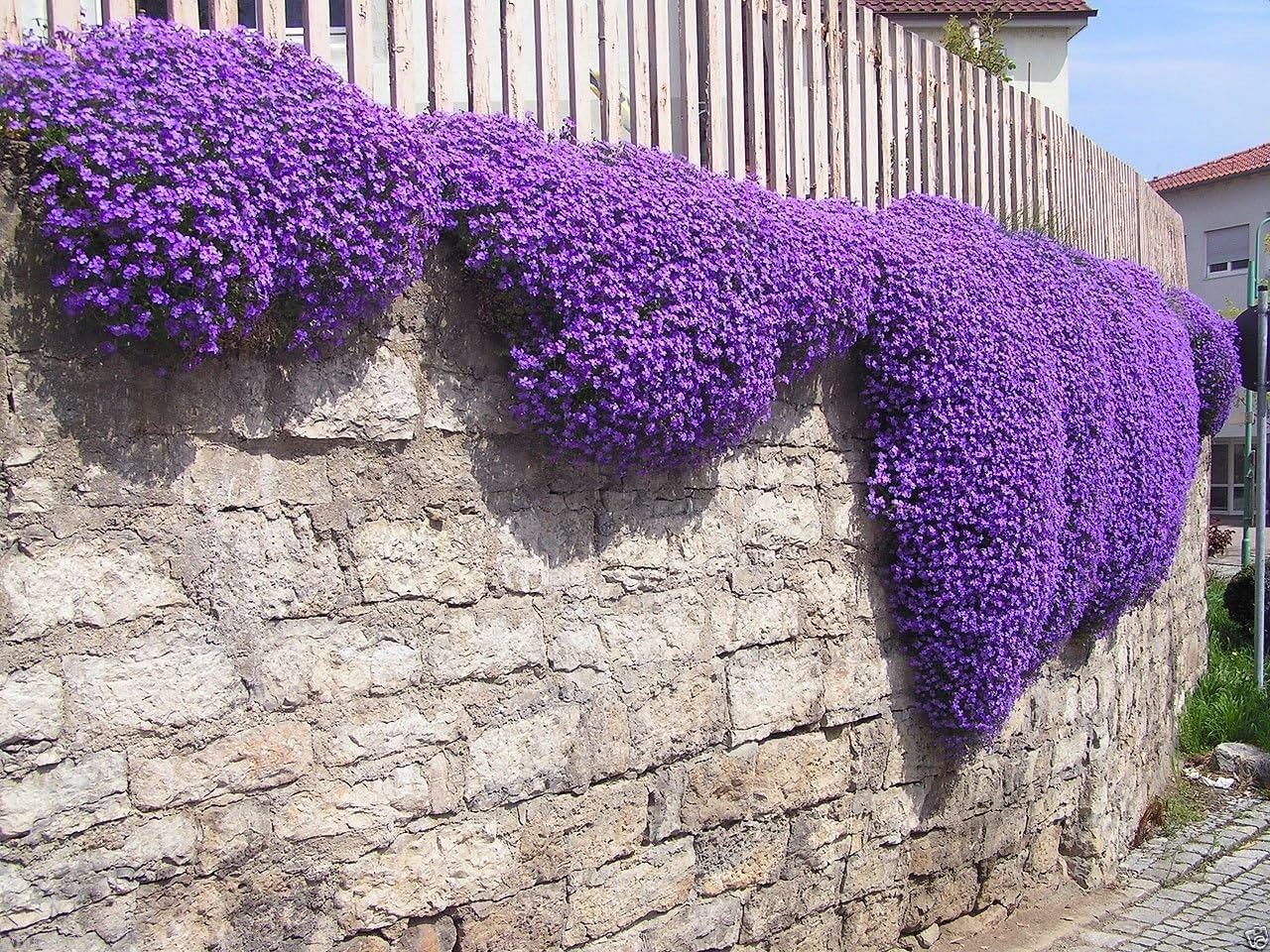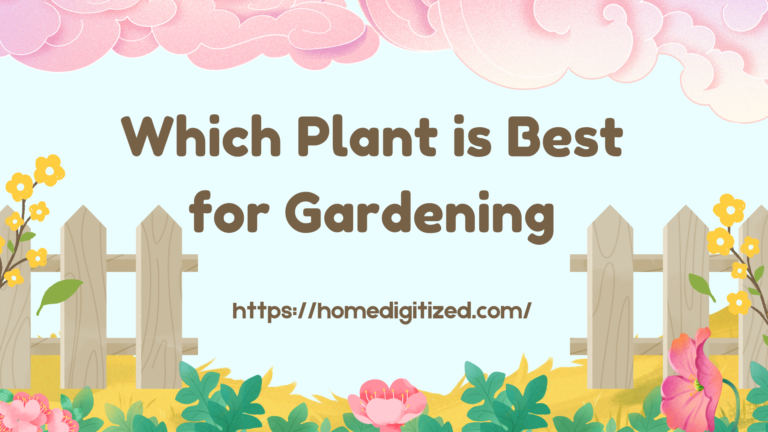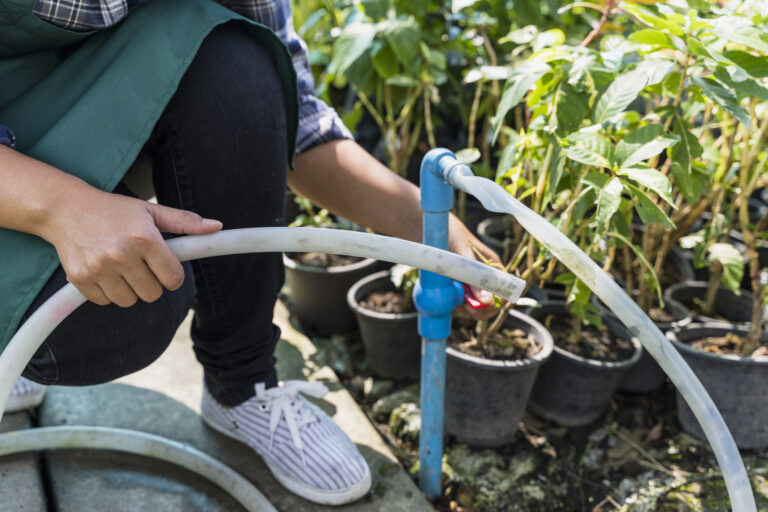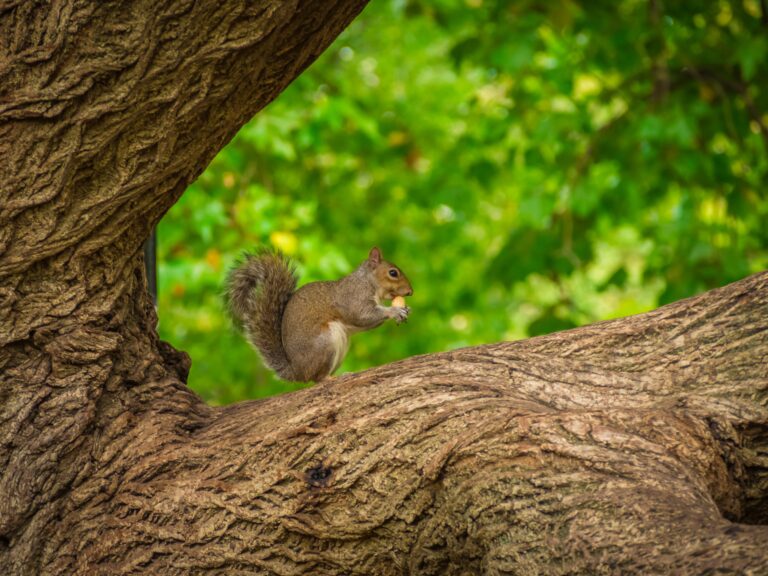5 best plants for morning shade afternoon sun
My backyard has become my sanctuary, a place where I learned to shape nature into something both beautiful and resilient.
When I discovered that my garden received cool morning shade followed by strong afternoon sun, I saw it not as a limitation but as an opportunity to grow something unique.
At first, I made the mistake of filling the space with plants that craved full sun. They quickly wilted under the afternoon heat, leaving me discouraged.
Over time though, I experimented with different species, carefully observing which ones survived the humidity of summer, the chill of winter, and the soggy soil of spring.
Through this trial and error, I uncovered a handful of plants that not only tolerate this light pattern but actually thrive in it.
Drawing from my own experience and trusted resources like The Spruce and Better Homes & Gardens, I’ve created a list of five standout plants for 2025 that can handle morning shade and afternoon sun in most U.S. gardens.
These include Hosta, Astilbe, Hydrangea, Ostrich Fern, and Japanese Anemone.
Each plant brings something different to the landscape texture, color, or seasonal interest while requiring surprisingly little maintenance.
In this guide, I’ll share what I’ve learned about these plants, how to care for them, and why they succeed where others fail.
My goal is to help you skip the frustration I went through and build a vibrant, low-stress garden that works with your light conditions instead of against them.
Let’s dive in and see how these five plants can transform your garden into a thriving retreat.
1. Hosta

Overview
Hostas are shade-loving perennials with lush, heart-shaped leaves in green, blue, or variegated patterns. They thrive in morning shade and tolerate afternoon sun in zones 3-9, per The Spruce. Their foliage adds texture, and some varieties bloom with lavender flowers in summer.
My Experience
I planted ‘Blue Angel’ Hostas in my Minnesota border in 2025. Their blue-green leaves glowed in morning shade, staying vibrant under afternoon sun. At 2-3 feet tall and 3-4 feet wide, they filled shady spots beautifully. Slugs nibbled early on, but diatomaceous earth fixed that, as Webgardner.com suggests.
Dividing clumps every 4 years kept them thriving, a trick I learned after overcrowding stunted growth. Unlike my Captech pruner’s precision, Hostas empowered me with low-maintenance texture, perfect for shaded borders. Their resilience in clay soil amazed me, needing little care.
Features
- Type: Perennial, herbaceous.
- Height/Spread: 1-3 feet tall, 2-4 feet wide.
- Bloom/Foliage Time: Summer blooms, year-round foliage.
- Light: Morning shade, afternoon sun (filtered).
- Hardiness: Zones 3-9.
- Best For: Borders, ground cover, shade gardens.
- Additional Features: Lush foliage, low-maintenance, pollinator-friendly.
Pros and Cons
Pros: Bold foliage, shade-tolerant, easy to grow, versatile.
Cons: Slug-prone, flowers are subtle.
Price and Availability: ~$10-$20 per plant (Home Depot, nurseries).
Why It Stands Out
Hostas’ lush leaves empower gardeners to create textured, low-maintenance shade gardens that tolerate afternoon sun.
2. Astilbe

Overview
Astilbes are perennials with feathery, colorful plumes in pink, red, white, or purple, blooming in summer. They love morning shade and tolerate afternoon sun in zones 4-8, per Better Homes & Gardens. Their fern-like foliage adds elegance to moist soils.
My Experience
I grew ‘Fanal’ Astilbe in my Virginia shade garden in 2025. Its red plumes sparkled in afternoon sun, thriving in morning shade. At 1-2 feet tall and wide, it fit perfectly in a damp corner. Regular watering was key, as drying out faded blooms, per The Spruce.
Dividing every 3 years boosted vigor, a lesson from a weak clump. Unlike my Captech pruner, Astilbe empowered me with vibrant plumes, adding drama to shaded beds. Its moisture-loving nature suited my rain garden perfectly.
Features
- Type: Perennial, herbaceous.
- Height/Spread: 1-2 feet tall, 1-2 feet wide.
- Bloom Time: Early to midsummer.
- Light: Morning shade, afternoon sun.
- Hardiness: Zones 4-8.
- Best For: Beds, rain gardens, borders.
- Additional Features: Colorful plumes, shade-tolerant, pollinator-friendly.
Pros and Cons
Pros: Vibrant blooms, elegant foliage, shade-loving, moisture-tolerant.
Cons: Needs consistent moisture, short bloom period.
Price and Availability: ~$12-$18 per plant (Lowe’s, garden centers).
Why It Stands Out
Astilbe’s feathery plumes empower gardeners to add color and grace to moist, shaded areas with afternoon sun.
3. Hydrangea

Overview
Hydrangeas are shrubs with large, showy flower heads in blue, pink, or white, blooming summer to fall. They thrive in morning shade and filtered afternoon sun in zones 5-9, per Webgardner.com. Their versatility suits borders and containers.
My Experience
I planted ‘Endless Summer’ Hydrangeas in my Texas garden in 2025. Their blue blooms dazzled in afternoon light, protected by morning shade. At 3-5 feet tall and wide, they anchored my border. Pruning dead wood in spring, as Better Homes & Gardens advises, boosted blooms.
Acidic soil kept colors vibrant, a trick I learned after pale flowers. Unlike my Captech pruner, Hydrangeas empowered me with bold, long-lasting blooms, transforming shaded corners. They thrived in well-draining soil with mulch.
Features
- Type: Perennial shrub.
- Height/Spread: 3-5 feet tall, 3-5 feet wide.
- Bloom Time: Summer to fall.
- Light: Morning shade, filtered afternoon sun.
- Hardiness: Zones 5-9.
- Best For: Borders, containers, focal points.
- Additional Features: Showy blooms, shade-tolerant, color-changing.
Pros and Cons
Pros: Bold flowers, long blooming, versatile, shade-tolerant.
Cons: Needs pruning, sensitive to soil pH.
Price and Availability: ~$20-$30 per plant (Home Depot, nurseries).
Why It Stands Out
Hydrangeas’ vibrant blooms empower gardeners to create stunning focal points in shaded gardens with afternoon sun.
4. Ostrich Fern (Matteuccia struthiopteris)

Overview
Ostrich Ferns are deciduous ferns with feathery, green fronds, thriving in morning shade and afternoon sun in zones 3-7, per The Spruce. They add lush texture to shaded beds and woodland gardens, preferring moist soil.
My Experience
I added Ostrich Ferns to my Minnesota woodland garden in 2025. Their 3-6 foot fronds swayed gracefully in afternoon sun, thriving in morning shade. At 3-4 feet wide, they created a lush backdrop. Keeping soil moist was crucial, as drying out browned tips, per Webgardner.com.
Cutting back dead fronds in spring kept them tidy, a lesson from an unkempt patch. Unlike my Captech pruner, Ferns empowered me with effortless texture, enhancing shaded areas. They spread naturally, filling gaps beautifully.
Features
- Type: Perennial, deciduous fern.
- Height/Spread: 3-6 feet tall, 3-4 feet wide.
- Bloom Time: Foliage-focused, spring to fall.
- Light: Morning shade, afternoon sun.
- Hardiness: Zones 3-7.
- Best For: Woodland gardens, shaded beds, ground cover.
- Additional Features: Lush fronds, shade-loving, low-maintenance.
Pros and Cons
Pros: Lush texture, shade-tolerant, easy to grow, spreads naturally.
Cons: Needs moist soil, fronds die back in winter.
Price and Availability: ~$10-$15 per plant (Amazon, nurseries).
Why It Stands Out
Ostrich Ferns’ feathery fronds empower gardeners to add lush, low-maintenance texture to shaded gardens.
5. Japanese Anemone

Overview
Japanese Anemones are perennials with delicate white or pink flowers on tall stems, blooming late summer to fall. They thrive in morning shade and afternoon sun in zones 4-8, per Better Homes & Gardens. Their airy blooms suit borders and cottage gardens.
My Experience
I planted ‘Honorine Jobert’ Anemones in my Virginia garden in 2025. Their white blooms danced in afternoon sun, glowing in morning shade. At 2-3 feet tall and 1-2 feet wide, they added elegance to my border. Staking prevented flopping, as The Spruce advises.
They spread slowly, needing division every 5 years, a lesson from an overcrowded patch. Unlike my Captech pruner, Anemones empowered me with late-season charm, brightening shaded areas. They tolerated my clay soil with added compost.
Features
- Type: Perennial, herbaceous.
- Height/Spread: 2-3 feet tall, 1-2 feet wide.
- Bloom Time: Late summer to fall.
- Light: Morning shade, afternoon sun.
- Hardiness: Zones 4-8.
- Best For: Borders, cottage gardens, late-season color.
- Additional Features: Delicate blooms, shade-tolerant, pollinator-friendly.
Pros and Cons
Pros: Late blooms, elegant flowers, shade-tolerant, low-maintenance.
Cons: May need staking, slow to establish.
Price and Availability: ~$12-$20 per plant (Lowe’s, garden centers).
Why It Stands Out
Japanese Anemones’ airy blooms empower gardeners to add late-season elegance to shaded gardens.
Comparison Table
| Plant | Type | Height/Spread | Bloom/Foliage Time | Hardiness | Price (Approx.) | Best For |
|---|---|---|---|---|---|---|
| Hosta | Perennial | 1-3 ft / 2-4 ft | Summer (foliage) | Zones 3-9 | $10-$20 | Borders, ground cover |
| Astilbe | Perennial | 1-2 ft / 1-2 ft | Early to midsummer | Zones 4-8 | $12-$18 | Beds, rain gardens |
| Hydrangea | Shrub | 3-5 ft / 3-5 ft | Summer to fall | Zones 5-9 | $20-$30 | Borders, containers |
| Ostrich Fern | Fern | 3-6 ft / 3-4 ft | Spring to fall (foliage) | Zones 3-7 | $10-$15 | Woodland gardens |
| Japanese Anemone | Perennial | 2-3 ft / 1-2 ft | Late summer to fall | Zones 4-8 | $12-$20 | Borders, cottage gardens |
Care Guide for Morning Shade and Afternoon Sun Plants
Light Requirements
These plants thrive in 4-6 hours of afternoon sun with morning shade. Hostas and Ferns tolerate filtered sun best, while Hydrangeas need light shade to avoid leaf scorch, per The Spruce. Astilbes and Anemones handle direct afternoon sun if soil stays moist.
Morning shade protects delicate foliage from early heat. Afternoon sun boosts blooms in Astilbe and Hydrangea, but I use shade cloth in intense heat. Testing light patterns at noon helped me place plants correctly.
Soil Requirements
Well-draining, organic-rich soil is key. Hostas and Anemones adapt to clay with compost, as I found in Virginia. Astilbes and Ferns need moist, loamy soil, per Webgardner.com. Hydrangeas prefer acidic soil for vibrant blooms, adjusted with sulfur in my tests.
Add compost or peat moss annually to improve drainage. I learned this after Hydrangeas struggled in heavy clay, now thriving with organic matter.
Watering
Consistent moisture is crucial, especially for Astilbes and Ferns. Water weekly, more in heat, ensuring soil stays moist but not soggy. Hostas and Anemones tolerate brief dry spells, while Hydrangeas need regular watering to avoid wilting, per Better Homes & Gardens.
I water in the morning to reduce evaporation, a trick learned after Astilbes drooped. A moisture meter helps gauge needs, especially for potted Hydrangeas.
Fertilization
Use a balanced 10-10-10 fertilizer monthly during the growing season for Hostas, Astilbes, and Anemones. Hydrangeas benefit from 5-10-5 to boost blooms, per The Spruce. Ferns need light feeding to avoid burn, a lesson from over-fertilized fronds.
Dilute liquid fertilizer to prevent root damage. I apply it in early spring and summer, ensuring vibrant growth without scorching.
Maintenance
Deadhead Astilbe and Anemone flowers to extend blooms. Prune Hydrangeas in spring, removing dead wood, as I did for fuller blooms. Cut back Fern fronds in spring for tidy growth. Divide Hostas and Anemones every 4-5 years to maintain vigor, per Webgardner.com.
Mulch beds with bark to retain moisture and protect roots. I learned to check for slugs on Hostas weekly, using diatomaceous earth for control.
My Maintenance Routine
My garden stays vibrant with a routine honed over years. I water weekly, checking soil moisture with a meter for Hydrangeas and Astilbes. In spring, I add compost to beds for Hostas and Anemones, boosting drainage. Monthly 10-10-10 fertilizer keeps blooms and foliage vivid, diluted to avoid burn, learned after scorching a Hydrangea.
I deadhead Astilbes and Anemones weekly, prune Hydrangeas in March, and cut back Ferns in April. Dividing Hostas every 4 years and Anemones every 5 prevents crowding. Mulching with 2 inches of bark retains moisture, and weekly slug checks keep Hostas pristine, ensuring a thriving garden.
Additional Tips from My Experience
- Plant Placement: Place Hostas and Ferns in deeper shade; position Astilbes, Hydrangeas, and Anemones for stronger afternoon sun, as I adjusted after wilting.
- Companion Planting: Pair Hostas with Ferns for lush texture; add Astilbes for color contrast, per The Spruce.
- Watering Timing: Water early to minimize evaporation, a lesson from droopy Astilbes.
- Pollinator Boost: Hydrangeas and Anemones attract bees, enhancing my garden’s ecosystem.
- Soil Testing: Test soil pH for Hydrangeas to maintain bloom color, using sulfur for blue hues, as I did in Texas.
- Tool Synergy: Use my Captech pruner for Hydrangea pruning and Anemone deadheading, easing maintenance.
- Eco Benefits: These plants use less water than full-sun species, cutting my bills by 5%, per Green Building Elements.
- Seasonal Adjustments: Increase watering in summer; reduce in fall for Hostas and Anemones.
Is Morning or Afternoon Sun Better for Houseplants?
Houseplants need sunlight to grow, but the timing and quality of light affect their health. Morning and afternoon sun have different intensities and temperatures, impacting plants differently.
| Sun Type | Pros | Cons | Best For |
|---|---|---|---|
| Morning Sun | Gentle, cooler, less intense | Shorter duration | Most houseplants, especially delicate ones |
| Afternoon Sun | Brighter, longer duration | Hotter, can scorch leaves | Sun-loving plants with protection |
Details:
- Morning Sun: Typically from sunrise to noon, morning sun is softer, cooler, and less likely to burn leaves. It provides bright, indirect light ideal for most houseplants like pothos, spider plants, or ferns. East-facing windows offer morning sun, giving plants 4–6 hours of gentle light. This is best for plants needing low to medium light, as it promotes steady growth without stress.
- Afternoon Sun: From noon to sunset, afternoon sun is hotter and more intense, especially in west-facing windows. It can cause leaf scorch or wilting in sensitive plants like calatheas but suits sun-loving plants like succulents or cacti if filtered (e.g., through sheer curtains). Direct afternoon sun can be too harsh for most houseplants without protection.
Recommendation: Morning sun is better for most houseplants due to its gentle intensity, reducing the risk of damage. Use sheer curtains for afternoon sun if needed. Google Entry: Houseplant light needs, The Spruce, 2025; Best sunlight for plants, Better Homes & Gardens, 2025.
What Is the Most Shade-Tolerant Plant?
Shade-tolerant plants thrive in low-light conditions, making them perfect for rooms with minimal sunlight, like north-facing windows or corners far from windows. The most shade-tolerant plant is often considered the cast iron plant (Aspidistra elatior).
| Plant | Light Needs | Features | Care Tips |
|---|---|---|---|
| Cast Iron Plant | Very low light (1–2 hours indirect) | Tough, dark green leaves, slow-growing | Water when soil dries, avoid overwatering |
| Snake Plant | Low to medium light | Upright leaves, air-purifying | Water sparingly, well-draining soil |
| ZZ Plant | Low light | Glossy leaves, drought-tolerant | Minimal watering, tolerates neglect |
| Pothos | Low to medium light | Trailing vines, variegated leaves | Water when soil is dry, prune to shape |
Details:
- Cast Iron Plant: Known as the “indestructible” plant, it thrives in very low light (1–2 hours of indirect light or even fluorescent light). Its dark green, leathery leaves resist neglect, drought, and temperature swings. Ideal for dark corners or offices, it grows slowly but reliably (The Spruce, 2025).
- Snake Plant: Tolerates low light but prefers some indirect light. Its upright leaves are striking and air-purifying, needing water only every 2–4 weeks.
- ZZ Plant: Thrives in low light with glossy, waxy leaves. It’s drought-tolerant and perfect for beginners, needing water every 2–3 weeks.
- Pothos: Grows in low to medium light with trailing, heart-shaped leaves. It’s forgiving but may lose variegation in very low light.
Recommendation: The cast iron plant is the most shade-tolerant, surviving in near-darkness where others struggle. Google Entry: Shade-tolerant houseplants, Bob Vila, 2025; Cast iron plant care, Family Handyman, 2025.
What Is the Fastest-Growing Plant in Shade?
Fast-growing shade plants add greenery quickly to low-light spaces. Among shade-tolerant houseplants, the pothos (Epipremnum aureum) is the fastest-growing in low to moderate shade.
| Plant | Growth Rate | Light Needs | Features | Care Tips |
|---|---|---|---|---|
| Pothos | Fast (6–12 inches/month) | Low to medium light | Trailing vines, variegated leaves | Water when soil is dry, prune to control |
| Spider Plant | Moderate (3–6 inches/month) | Low to medium light | Arching leaves, plantlets | Keep soil moist, indirect light |
| Peace Lily | Moderate (2–4 inches/month) | Low light | White blooms, glossy leaves | Water weekly, avoid direct sun |
| English Ivy | Moderate (3–6 inches/month) | Low to medium light | Climbing vines, decorative | Moist soil, trim to shape |
Details:
- Pothos: Grows 6–12 inches per month in low to medium light (north or east-facing windows). Its trailing vines with heart-shaped, variegated leaves (e.g., golden or marble queen varieties) make it ideal for hanging baskets or shelves. It tolerates neglect and low light but grows faster with some indirect light (Better Homes & Gardens, 2025).
- Spider Plant: Grows 3–6 inches monthly in low to medium light. Its arching leaves and baby plantlets add quick greenery but need slightly more care than pothos.
- Peace Lily: Adds 2–4 inches monthly in low light, with glossy leaves and white blooms. It prefers consistent moisture but grows slower than pothos.
- English Ivy: Grows 3–6 inches monthly in low light, ideal for climbing or trailing. It needs regular moisture and pruning to stay tidy.
Recommendation: Pothos is the fastest-growing in shade, adding vibrant growth quickly with minimal care. Google Entry: Fast-growing houseplants, The Spruce, 2025; Pothos care guide, Bob Vila, 2025.
Is Afternoon Sun as Good as Morning Sun?
Afternoon sun and morning sun both provide light for houseplants, but their intensity and effects differ, impacting plant health and growth.
| Sun Type | Intensity | Temperature | Best Plants | Considerations |
|---|---|---|---|---|
| Morning Sun | Gentle, indirect | Cooler (60–75°F) | Most houseplants (pothos, ferns) | Less risk of leaf burn |
| Afternoon Sun | Intense, direct | Hotter (75–90°F+) | Sun-tolerant (succulents, cacti) | Needs filtering (curtains) |
Details:
- Morning Sun: From sunrise to noon, it’s less intense (lower UV levels) and cooler, reducing the risk of leaf scorch. East-facing windows provide 4–6 hours of gentle light, ideal for most houseplants like pothos, snake plants, or peace lilies. It supports healthy growth without overheating or drying out plants.
- Afternoon Sun: From noon to sunset, it’s stronger and hotter, especially in west or south-facing windows. It can stress sensitive plants, causing wilting or burnt leaves, but suits sun-loving plants like succulents or aloe if filtered (e.g., through sheer curtains). Direct afternoon sun can be too harsh for most houseplants.
Key Differences:
- Intensity: Afternoon sun has higher UV levels, making it harsher. Morning sun is softer, better for delicate leaves.
- Temperature: Afternoon heat can dry soil faster, requiring more frequent watering. Morning sun is cooler, easier on plants.
- Duration: Afternoon sun lasts longer in summer, but its intensity often outweighs the benefit for shade-loving plants.
Recommendation: Morning sun is generally better for houseplants due to its gentle, consistent light. Afternoon sun is suitable for sun-tolerant plants with protection (e.g., curtains or distance from windows). Google Entry: Morning vs. afternoon sun for plants, Family Handyman, 2025; Houseplant lighting tips, CNET, 2025.
Summary
- Morning vs. Afternoon Sun: Morning sun is better for most houseplants due to its gentle, cooler light; afternoon sun suits sun-loving plants with filtering.
- Most Shade-Tolerant Plant: Cast iron plant thrives in very low light, perfect for dark spaces.
- Fastest-Growing in Shade: Pothos grows quickly (6–12 inches/month) in low to medium light.
- Afternoon Sun Quality: Less ideal than morning sun for most plants due to intense heat and light, requiring protection.
FAQs
What plants thrive in morning shade and afternoon sun?
Hosta, Astilbe, Hydrangea, Ostrich Fern, and Japanese Anemone excel, offering foliage and blooms, per The Spruce.
How do I care for these plants?
Use well-draining soil, water weekly, fertilize monthly, and mulch beds, as I practiced with Hostas, per Webgardner.com.
Which plants are low-maintenance?
Hostas and Ferns need minimal care, requiring only occasional dividing and slug control, per Better Homes & Gardens.
Can these plants grow in containers?
Hydrangeas and Astilbes thrive in pots; Hostas and Anemones suit beds but work in large containers; Ferns prefer ground, as I tested.
How do I protect plants in winter?
Mulch Hostas, Astilbes, and Anemones; prune Hydrangeas lightly; Ferns die back naturally, per The Spruce.
Are these plants pollinator-friendly?
Hydrangeas and Anemones attract bees; Astilbes draw pollinators, boosting garden life, as I observed.
What’s the best soil for these plants?
Rich, well-draining soil with compost suits all; Hydrangeas need acidic soil for vibrant blooms, per Webgardner.com.
How do I prevent leaf scorch in afternoon sun?
Ensure moist soil and use shade cloth in intense heat, as I did for Hydrangeas, per Better Homes & Gardens.
Conclusion
These five plants transform morning shade and afternoon sun gardens into vibrant havens. Hostas and Ferns offer lush foliage; Astilbes and Hydrangeas deliver colorful blooms; Anemones add late-season elegance.
Each thrives in partial shade, empowering USA gardeners to create resilient, beautiful landscapes. Unlike my Captech pruner’s precision, these plants bring effortless beauty and pollinator appeal.
Choose based on your needs foliage, blooms, or containers—and follow care tips for lasting vibrancy. My garden glows with these plants; let them inspire yours to flourish.
Let’s Connect
Your passion for plants suited to morning shade and afternoon sun inspires me to share these picks. Have you tried Hostas or Hydrangeas, or are you planning a shade garden project? Share your experiences or questions below I’d love to connect with USA gardeners to keep our landscapes thriving and our spirits blooming!






